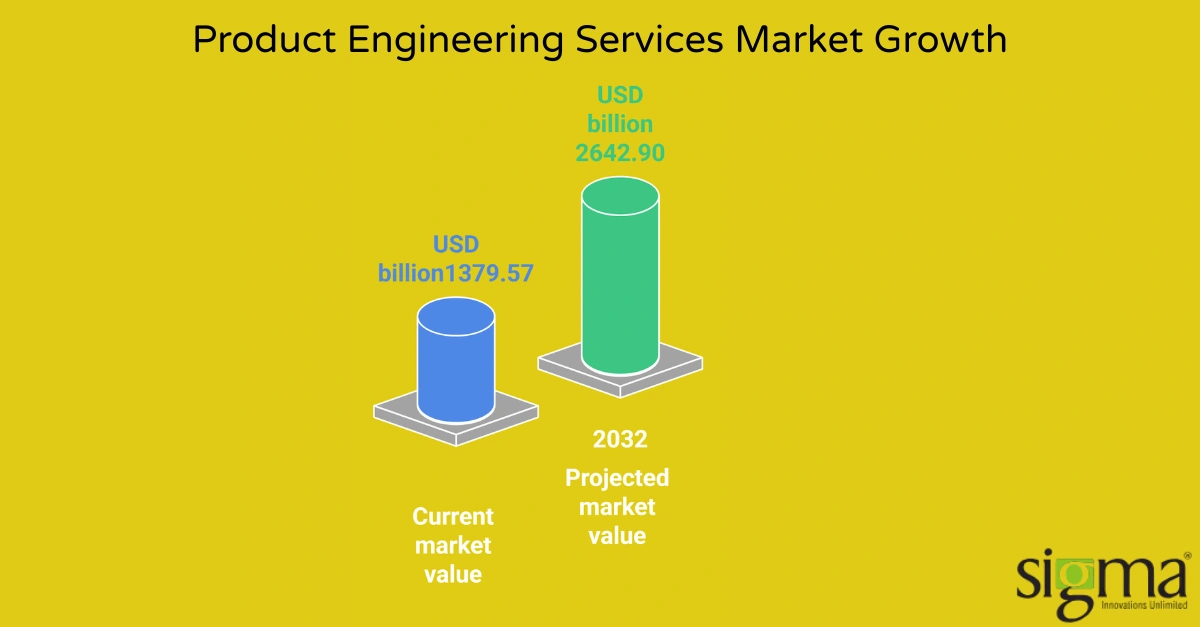How Product Engineering Strengthens an Enterprise’s Digital Resilience
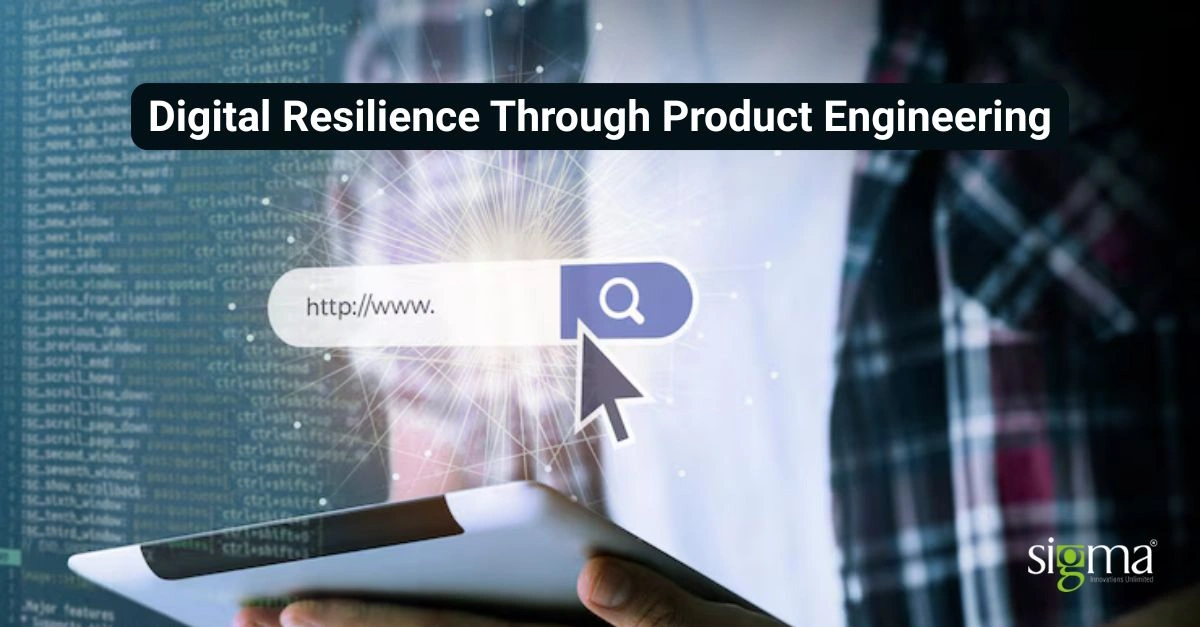
Is digital resilience a mere buzzword? Disruptions ranging from cyberattacks and natural disasters to global pandemics and system outages are battering enterprises. As digital resilience is holding the reins, mitigating these troubles, it is undeniably not a buzzword! It is a crucial competence for an organization to navigate the intricate, connected, and complex, ever-evolving digital landscape. But what capabilities can digital resilience bestow on an enterprise? Besides supporting rapid innovation and agility, it strengthens long-term competitiveness, enabling businesses to stay afloat and thrive in competitive markets.
What is digital resilience?
Digital resilience is an enterprise’s superhero cape! When chaos strikes, it is the system’s Ctrl+Z for cyberattacks; it kicks into rewinding the damage and gets operations running and humming again. Digital resilience is an organization’s capability to adapt to, resist, and bounce back from disruptions like cyberattacks, hardware breakdowns, or service outages. Besides ensuring uninterrupted operations, digital resilience enables enterprises to safeguard business integrity in the wake of digital adversity. The next big question is, how can enterprises build digital resilience? The answer is through product engineering!
Why is digital resilience a core business imperative?
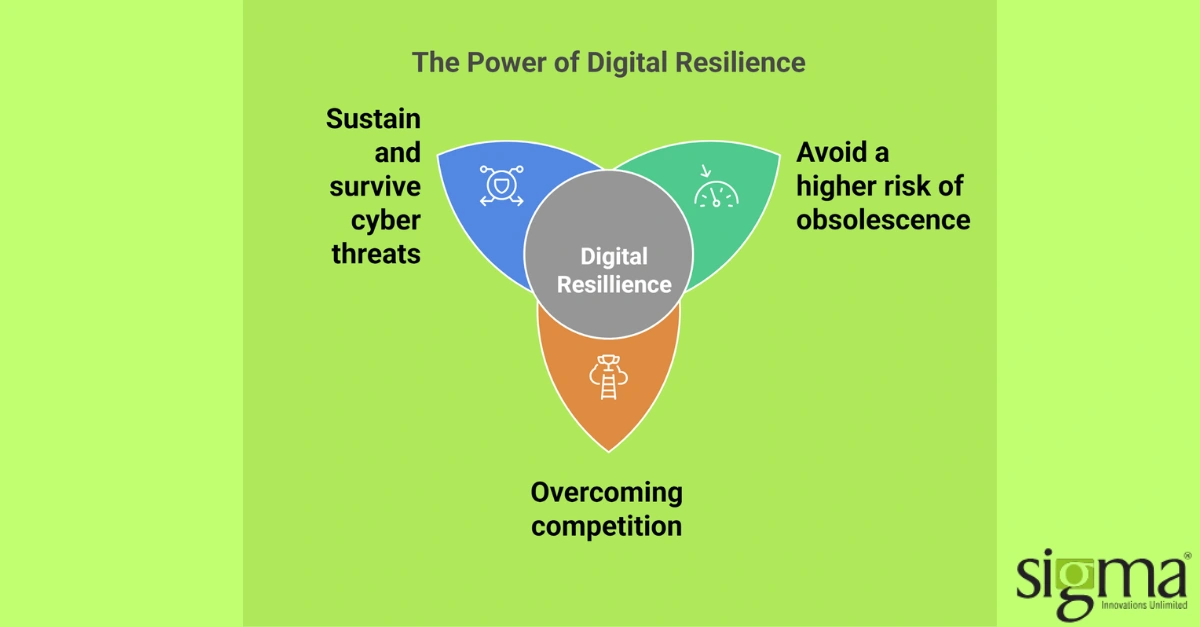
- Increasing frequency of cyber threats: Cyber threats are growing in frequency and sophistication across digital ecosystems, making organizations prone to costly breaches and reputational damage.
- Higher risk of obsolescence: Paradigm shifts in market trends and increasing geopolitical tensions necessitate a need for rapid response; failing to do so pushes businesses to obsolescence.
- Falling behind the competition: Technical advancements, the advent of AI, cloud computing, and IoT are redefining the contour of business ecosystems, compelling enterprises to keep pace or get eliminated!
The unmissable impact of digital resilience!
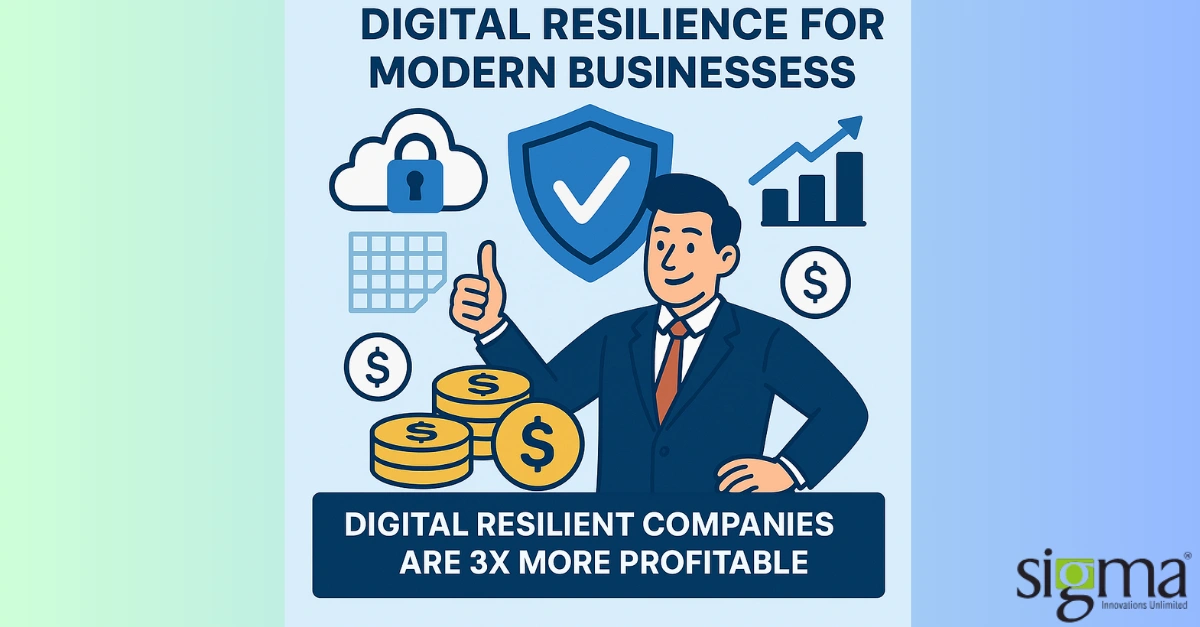
Why is the path to achieving digital resilience fraught with obstacles?
Even a well-intentioned digital transformation can be undermined if the enterprises are stuck using legacy infrastructure and traditional operating models that fail to keep pace with modern digital demands, and insufficient cybersecurity measures. All these add up, making the path to achieving digital resilience filled with pitfalls. Here is an overview of common pitfalls that prevent businesses from achieving digital resilience.

1. Legacy Systems and Infrastructure
Many enterprises are burdened by legacy systems and tech stacks that are difficult to upgrade or integrate with modern digital tools. Lack of interoperability across departments and rigid systems lacking cloud-native solutions or APIs thwart innovation.
2. Siloed Teams and Fragmented Communication
Enterprises with rigid departmental boundaries often face immense challenges while collaborating or sharing knowledge, leading to unpreparedness or delayed response to a threat, weakening an organization’s agility.
3. Slow and Risk-Averse Innovation Culture
Long development and deployment cycles and meagre infrastructure preventing the adoption of AI or blockchain become stumbling blocks, stopping enterprises from pivoting towards a digitally native approach.
4. Inadequate Cybersecurity and Risk Management
Relying heavily on outdated security protocols, inability to maintain cyber hygiene, and underestimating the risks associated with third-party vendors and cloud services are key aspects preventing an enterprise from achieving digital identity resiliency.
5. Complex and Uncoordinated Tech Ecosystems
Lack of skilled talent, technical debt slowing down innovation and scalability, and deploying numerous platforms and applications make integrations difficult and systems redundant, preventing digital resilience.
If digital resilience is imperative, then how can enterprises build this core competency? The answer is through product engineering.
Product Engineering: The ultimate enabler of digital resilience
Marketing, industry trends and customer needs shift on a dime, making digital resilience not just a desirable trait but an imperative ingredient fostering strategic growth. It is where product engineering takes centre stage, empowering businesses and enterprises of every scale to adapt and evolve rapidly, steering them towards new heights of success. Integrating agile product development methodologies, cloud-native architectures, and product engineering fuels innovation, helping enterprises create robust, scalable, and future-proof products or systems. With a new business mushrooming every day and owing to the neck-to-neck competition, enterprises are always on their toes to pivot and respond faster to market changes, and recover quicker from any adversity.
Product engineering brings in flexibility, speed, and user-centric design into the product lifecycle, enabling businesses to explore a plethora of revenue streams and seize a multitude of growth opportunities. With product engineering, businesses don’t just survive but tide over unfavorable conditions and lead through change. Businesses looking to transform resilience from a reactive safeguard to a proactive strategy should choose the best product engineering services to accomplish their goals. Owing to the immense benefits that product engineering offers, businesses are embracing it with great vigor! A testament to this is the upward growth trajectory of the product engineering services market.
How is the product engineering services market faring?
Product engineering—transforming an idea into a market-ready digital product!
Product engineering’s core focus remains on building scalable products that cater to the needs of the end users. As an uninterrupted process, product engineering is an effective solution for designing, developing, testing, and scaling a software product. Product engineering allows businesses to blend software development with engineering best practices, innovate, and create products that strike a perfect chord with their users or their clients.
The Linchpin of Product Engineering:
An overview of the components that make product engineering the ultimate
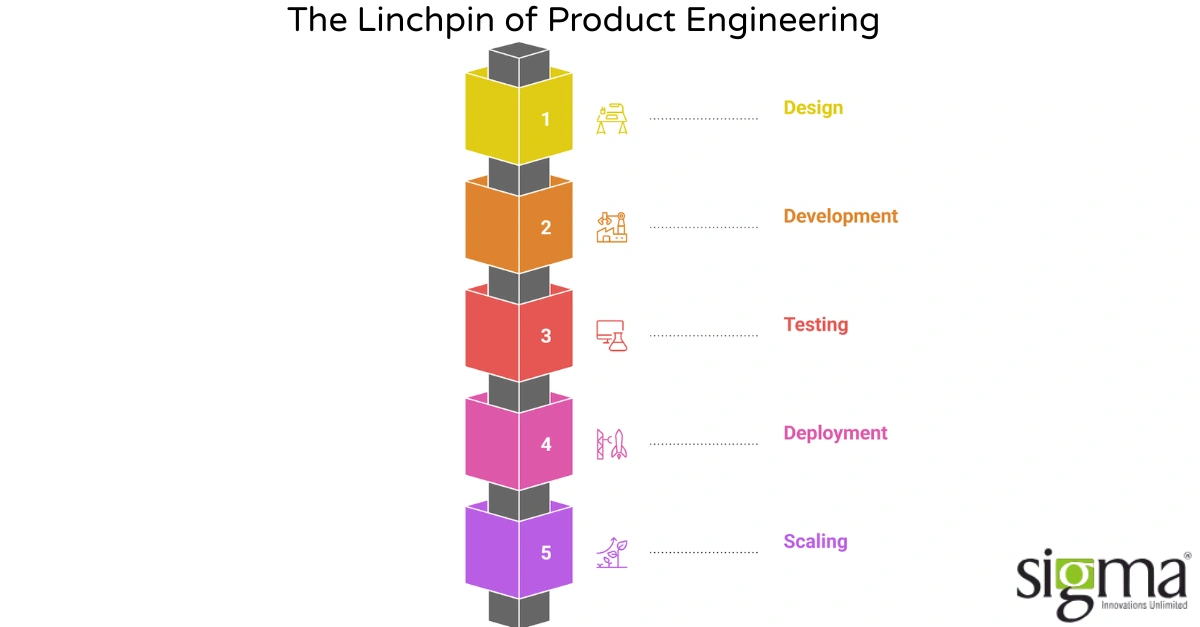
- Design: The focus from scratch includes usability, scalability, and resilient architecture for a system involving user research, UI/UX design, architecture design, and prototyping.
- Development: Agile practices, modern frameworks, DevOps for coding the application through front-end and back-end engineering, microservices, APIs, and more.
- Testing: Continuous and automated testing to ensure product quality, build digital resilience, and make product releases bug-free.
- Deployment: Making the best use of CI/CD pipelines, cloud platforms, and containerization, like Docker, Kubernetes, for facilitating rapid and repeatable deployments.
- Scaling: Tuning the tech infrastructure, monitoring, and initiating post-launch activities to ensure that the released product has the capabilities to handle growth in users.
Product engineering: Driving innovation and customer-centric products
Product engineering is a crucial aspect of continuous innovation. Hence, it is dynamic, and persistent iterations, upgrades, and tech enhancements are part and parcel of product engineering. With product engineering, businesses don’t just build technically strong products but craft and create products that align with the user’s needs and precisely address their problem. It enables customer-centric product development, delivering tangible value.
How is product engineering different from traditional IT development?
- Aspect
- Approach
- Focus
- Innovation
- User Involvement
- Deployment Cycle
- Ownership
- Business Alignment
- Product Engineering
- Product-centric, iterative
- End-user value, product evolution
- High—continuous enhancement & R&D
- Ongoing feedback loop
- Continuous (CI/CD)
- Shared across the product lifecycle
- Strong—tied to product growth & ROI
- Traditional IT Development
- Project-centric, linear
- Task completion, requirement fulfilment
- Low – fixed scope and tech stack
- Limited to initial requirements
- Periodic, often manual
- Typically ends after delivery
- Weaker—focused on deliverables
Transforming reactive systems into resilient ones: How product engineering leads the way.
Product engineering enables organizations to build adaptable and scalable systems that will become the key players acing the game of digital resilience and knocking away the threats of disruption. Agile product development lets businesses respond to dynamic market changes, minimizing operational downtime with constant updates. Additionally, cloud-native resilient architectures and DevOps practices, which are part of product engineering services, are at the forefront of creating systems that are not just fault-tolerant but also scalable. Besides this, continuous testing and modular designing, which are part of product engineering, create means and methods to formulate high-caliber, resilient applications that can come out unfazed and recover efficiently from disruptions. With real-time monitoring, product engineering enhances the visibility of the system’s health, setting the stage for proactive issue resolution. User-centric design and legacy modernization concepts in product engineering empower enterprises to evolve in accordance with their growing business demands, which ultimately leads to long-term digital stability and robust agility.
A breakdown of how product engineering ensures long-term digital stability and robust agility
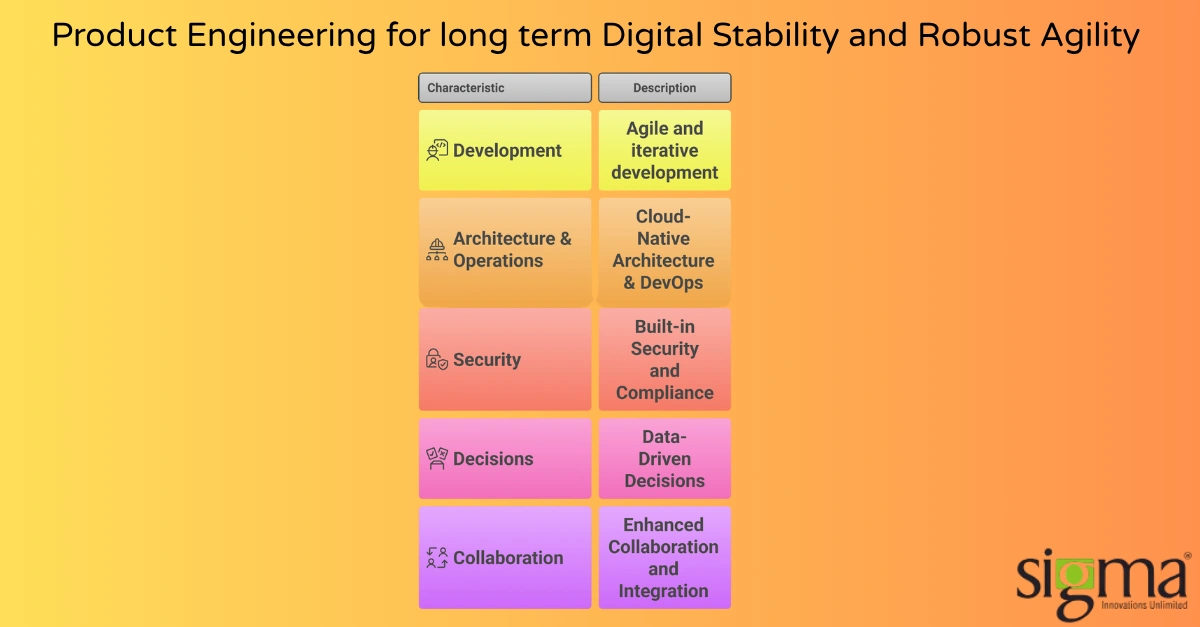
1. Agile and iterative development
Through agile and iterative development, product engineering promotes flexibility and enables businesses to pivot rapidly toward market shifts, make amends to systems based on user feedback, or tackle unexpected disruptions.
2. Cloud-Native Architecture & DevOps
Cloud-native development and microservice architecture used to create scalable and modular architecture allow products to strike the right balance between growth and adaptability. As each component functions independently of the other, it makes it easier to update the systems or products, scale, or replace parts of the system without impacting the whole structure. Besides ensuring flexibility, cloud-native architecture & DevOps make products sturdy enough to handle changing workloads. Supporting continuous improvements and maintaining performance under pressure, cloud-native architecture & DevOps as part of product engineering lays the foundation for digital resilience.
3. Built-in Security and Compliance
With DevSecOps as a part of product engineering, proactive protection by DevSecOps ensures integration of security at the very beginning of the product development lifecycle and not added later as an afterthought. With the “security by design” approach at their behest, businesses can identify threats and address them, enabling a swift response to vulnerabilities. Additionally, the security-by-design approach helps enterprises to establish a robust regulatory compliance posture crucial for protecting user data and system integrity.
4. Data-Driven Decisions
Product engineering enables businesses to create smart, resilient products by enabling data-driven decision-making. Real-time monitoring, analytics, and continuous feedback loops create the right ambience for businesses to gain deep insights into user behavior and other potential issues. Paving the way for predictive maintenance, it allows innovators and businesses to identify and resolve problems and also initiate proactive updates and proactive upgrades that dictate performance enhancement and security.
5. Enhanced Collaboration and Integration
Product engineering thrives on enhanced collaboration and seamless integration across cross-functional teams. It brings together various teams in an organization (developers, designers, testers, and operations ) under a unified workflow, eliminating silos. The synergy DevOps and CI/CD bring effectively streamlines development and deployment, creating a podium for rapid releases. Product engineering allows businesses to boost productivity and create products that can be scaled with speed, consistency, and resilience.
A snapshot of product engineering stories that worked
Many leading enterprises, like Netflix, have leveraged product engineering to significantly boost their digital resilience, showcasing tangible improvements in system reliability, agility, and customer satisfaction.
By adopting microservices and cloud-native product engineering, Netflix improved system uptime and scalability, resulting in 99.99% availability.
The tech stack, aka the Avengers of product engineering, making digital resilience possible!
APIs connect, AI predicts, cloud scales, and automation repeats. Though each plays a unique and powerful role, in combination they make digital resilience through product engineering a reality.
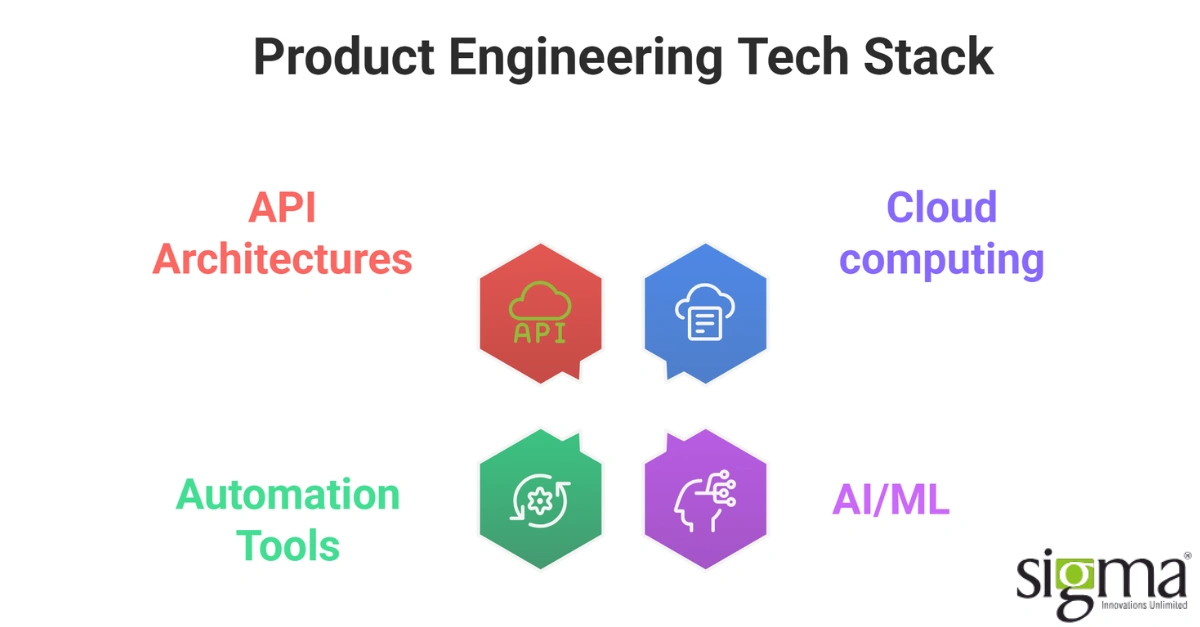
Cloud computing
Cloud computing enables scalability, flexibility, and speed, the much-needed trio to create digital products efficiently. By leveraging cloud platforms, businesses can quickly utilize resources and deploy applications globally, and without investing in physical infrastructure, they can scale their products based on real-time demand. Supporting continuous integration and delivery (CI/CD), cloud computing makes deployment cycles faster and more reliable. Additionally, it allows the integration of powerful tools for maintaining and monitoring systems, helping businesses focus on product development and enhancing user experience.
AI/ML
AI/ML for Predictive Capabilities in Product Engineering
Artificial Intelligence (AI) and Machine Learning (ML) facilitate proactive decision-making across the product lifecycle, vital for creating intelligent, adaptive, forward-looking digital products. Businesses can harness the potential of real-time and historical data for predictive insight, forecasting user behavior, and detecting anomalies. AI/ML, as a tech squad of product engineering, enhances automation, testing, predictive maintenance, and resource optimization. Automation and orchestration tools
Automation and Orchestration Tools
Orchestration tools like Jenkins, Kubernetes, and Terraform coordinate complex workflows across different systems and environments, driving efficiency and reducing errors. By managing dependencies, they effectively enforce deployment pipelines, bringing seamless collaboration across teams of an organization. They create efficient CI/CD pipelines and infrastructure as code (IaC) for automating scaling and paving the way for rapid product releases and greater system resilience.
API-first architectures
The API-first architecture concept in product engineering creates a perfect ambience for modularity, flexibility, and hassle-free integration between different systems and third-party services. With an API-first approach, businesses can focus on creating core functionalities and cohesively formulate strategies for smooth integration, accelerating development cycles.
Robust tech expertise and capability that allow businesses to embrace product-led growth is the need of the hour. This is where a software product engineering service provider comes into the
picture.
Sigma Infosolutions’ Product Engineering Services: The one-point solution for digital resilience
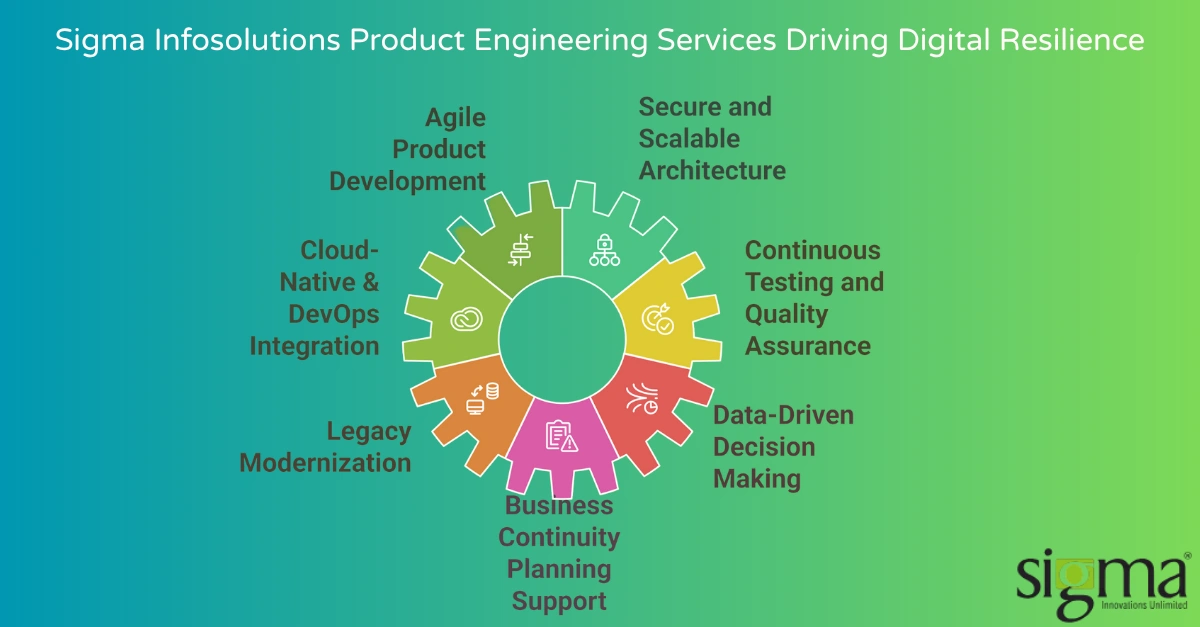
Sigma Infosolutions’ digital product engineering services help companies build digital resilience by ensuring their technology is agile, secure, scalable, and adaptable—equipping them to withstand, recover, and grow from digital disruptions.
1. Agile Product Development
The agile development services we offer help to iteratively develop and release features. Owing to this, businesses can respond quickly to changing market demands and customer expectations and also recover faster in the wake of adversity.
2. Secure and Scalable Architecture
With our robust tech expertise, we design scalable and secure product architectures that allow businesses to withstand digital threats and carry on with their operations uninterrupted during any crisis.
3. Cloud-Native & DevOps Integration
By leveraging cloud-native technologies and DevOps practices, Sigma Infosolutions enables faster deployment cycles, automated recovery processes, and higher system uptime. Owing to this, businesses can witness improved system availability, performance, and disaster recovery, vital for thriving in the competitive markets.
4. Continuous Testing and Quality Assurance
Our robust testing frameworks ensure that the software is resilient to bugs, performance issues, and other vulnerabilities, thus minimizing downtime and system failures for businesses.
5. Legacy Modernization
Sigma helps businesses modernize outdated systems into more flexible, service-based architectures. Owing to this, businesses can be better aligned with current technologies, reduce technical debt, and improve adaptability to change.
To know how technology development services can eliminate technical debt. Click here
6. Data-Driven Decision Making
With our BI and analytics capabilities and artificial intelligence development services, we enable businesses to create products that can adapt and respond to real-time events or risks.
Read our success story: BI & Analytics Solution for Atlanta-based Lender
7. Business Continuity Planning Support
By building software with redundancy, fault tolerance, and recovery mechanisms, we help businesses bridge existing gaps in infrastructure and ensure the continuity of digital operations even during unforeseen failures.
Wrapping up:
In a digital era shaped by constant disruption and innovation, resilience is no longer a luxury—it’s a lifeline. Product engineering emerges as the strategic enabler that transforms resilience from a reactive shield into a proactive superpower. By integrating cutting-edge technologies, agile methodologies, cloud-native infrastructure, and security-first principles, it empowers organizations to build robust, scalable, and intelligent systems that thrive under pressure. More than just driving innovation, product engineering ensures continuity, adaptability, and speed—traits that define future-ready enterprises. As businesses navigate an unpredictable digital landscape, partnering with a trusted product engineering services provider like Sigma Infosolutions is not just a smart move—it’s a survival strategy. The message is clear: those who invest in product engineering today are the ones who will lead, evolve, and endure tomorrow.
